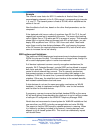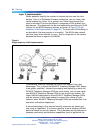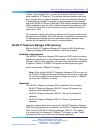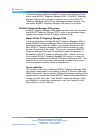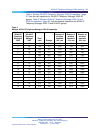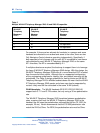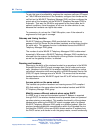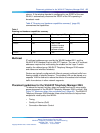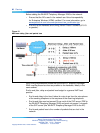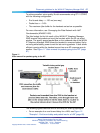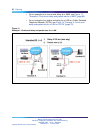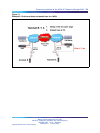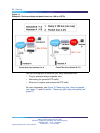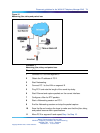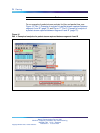
Placement guidelines for the WLAN IP Telephony Manager 2245 65
returns. If the wireless handset is configured to use ESSID of the new
WLAN, it automatically discovers the ESSID of the APs operating in
broadcast mode.
Table 6 "Roaming and handover capabilities summary" (page 65)
summarizes the capabilities.
Table 6
Roaming and handover capabilities summary
IP address
WSS in use
Roaming capability Handover capability
Static No No No
Static Yes Yes Yes
DHCP No Yes, if the
wireless handset
is power-cycled
between subnets.
No
DHCP Yes Yes Yes
Multicast
IP multicast addresses are used by the WLAN Handset 2211 and the
WLAN IP 6120 Handset Push-to-talk (PTT) feature. The use of IP multicast
addresses requires that multicasting be enabled on the Layer 2 switch
used by the defined group (WLAN IP Telephony Manager 2245 master
and slaves and wireless handsets).
Routers are typically configured with filters to prevent multicast traffic from
flowing outside of specific domains. The wireless LAN can be placed on a
separate VLAN or subnet to reduce the effects of broadcast and multicast
traffic from devices in other network segments.
Placement guidelines for the WLAN IP Telephony Manager 2245
To reduce the impact that jitter, delay and packet loss has on voice quality,
proper placement of the WLAN IP Telephony Manager 2245 is critical. See
Figure 10 "Maximum delay, jitter and packet loss" (page 66). The WLAN IP
Telephony Manager 2245 provides three critical functions to help achieve
exceptional voice quality over WLAN:
•
Timing
•
Quality of Service (QoS)
•
Connection Admission Control
Nortel Communication Server 1000
WLAN IP Telephony Installation and Commissioning
NN43001-504 01.02 Standard
Release 5.0 15 June 2007
Copyright © 2004-2007, Nortel Networks
.



